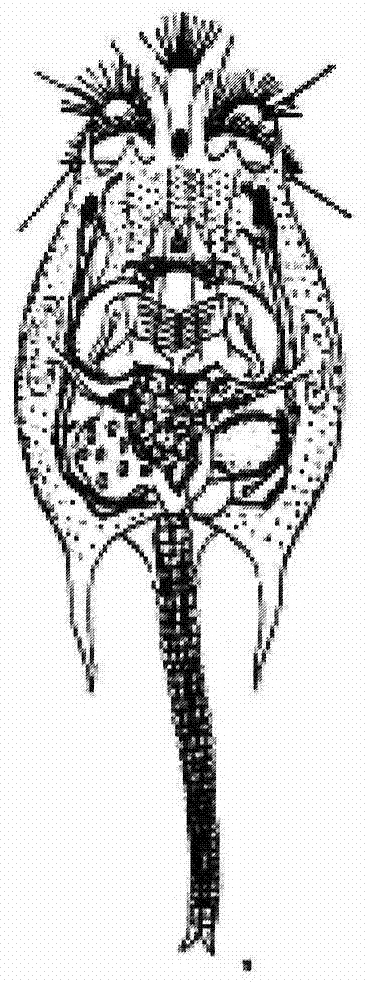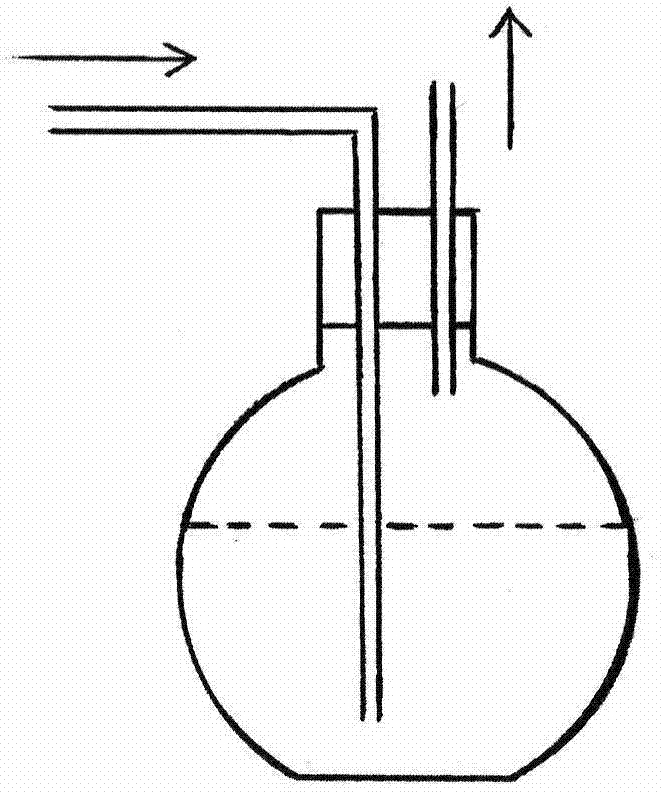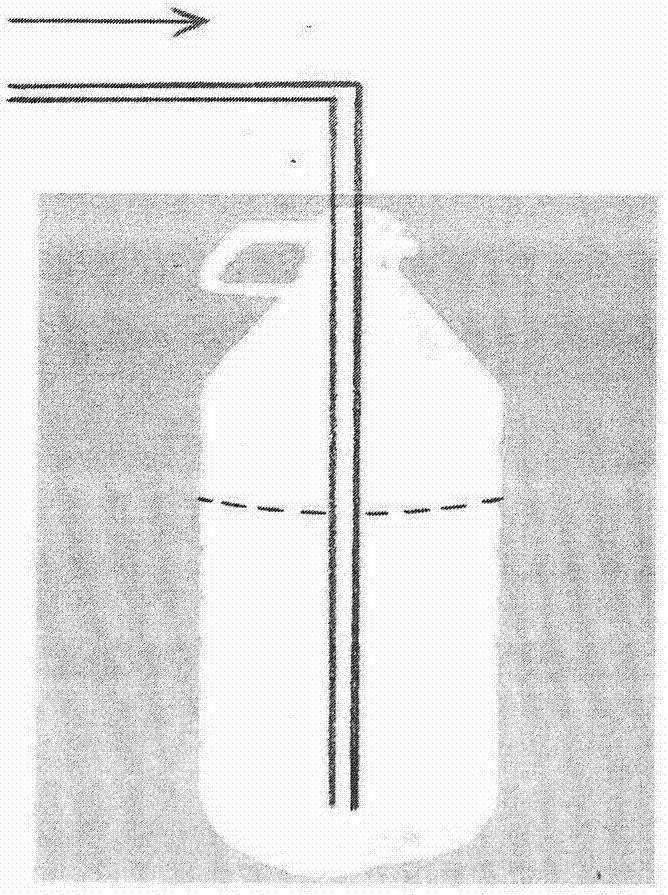Method for cultivating branchionus plicatilis through waste plastic buckets
A technology of Brachionus rotifers and waste plastics, applied in the field of aquaculture, can solve problems such as low technical requirements, complex technical processes, and difficulty for workers to master
- Summary
- Abstract
- Description
- Claims
- Application Information
AI Technical Summary
Problems solved by technology
Method used
Image
Examples
Embodiment Construction
[0018] A method for cultivating Brachionus rugosa with waste plastic barrels, the steps are as follows:
[0019] Step 1 Cultivation of bait microalgae
[0020] The formula of the culture solution by weight is NaNO 3 0.5 parts, KH 2 PO 3 0.005 parts, 1% FeC 6 h 5 o 7 0.2 parts of solution, vitamin B 1 0.0002 parts, vitamin B 12 0.00002 parts, 0.8 parts of human urine, 3 parts of sea mud extract, 1 part of ammonia water containing 25-28% ammonia, 0.2 parts of polypeptide urea, 0.1 parts of ammonium sulfate, 0.5 parts of potassium sulfate, 0.8 parts of potassium chloride, isobutylidene 0.3 parts of diurea, 0.4 parts of oxamide, 0.08 parts of ammonium magnesium phosphate, 0.2 parts of ammonium polyphosphate, 0.8 parts of sodium silicate, 0.0005 parts of polyamines, 0.02 parts of abscistin, 5 parts of sodium bicarbonate, 1.2 parts of soil extract, wheat 0.1 part of rice stone powder, 1000 parts of magnetized seawater after boiling and cooling; take a 1500 ml flat-bottome...
PUM
 Login to View More
Login to View More Abstract
Description
Claims
Application Information
 Login to View More
Login to View More - R&D
- Intellectual Property
- Life Sciences
- Materials
- Tech Scout
- Unparalleled Data Quality
- Higher Quality Content
- 60% Fewer Hallucinations
Browse by: Latest US Patents, China's latest patents, Technical Efficacy Thesaurus, Application Domain, Technology Topic, Popular Technical Reports.
© 2025 PatSnap. All rights reserved.Legal|Privacy policy|Modern Slavery Act Transparency Statement|Sitemap|About US| Contact US: help@patsnap.com



